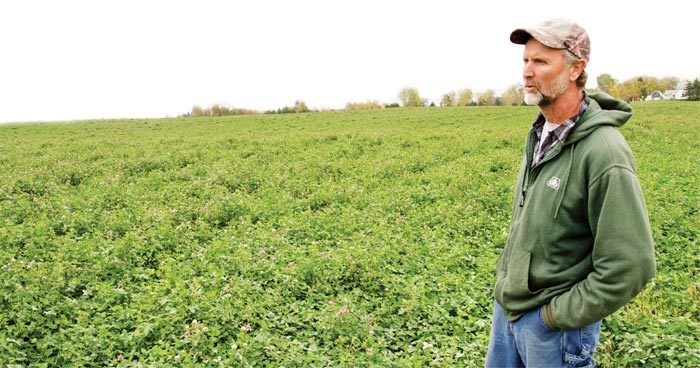No-Till Farmer
Get full access NOW to the most comprehensive, powerful and easy-to-use online resource for no-tillage practices. Just one good idea will pay for your subscription hundreds of times over.

Farmer Greg Nettekoven has been a busy man the past few growing seasons on his Black Creek, Wis., acres.
Not only has he switched half of his 700 acres over to no-till and cover crops since 2015, but he’s taking part in several initiatives designed to improve soil health and decrease phosphorus runoff into an important watershed.
He’s part of the Lower Fox Demonstration Farms Network, which aims to improve water quality in the Great Lakes by reducing phosphorus and sediment from entering Green Bay and Lake Michigan.
As part of a more encompassing Great Lakes Restoration Initiative, the six demonstration farms involved help showcase leading-edge conservation practices.
In 2014, he also became one of four farms in Northeast Wisconsin to partner with Glacierland RC&D to demonstrate the use of FGD gypsum as an agricultural soil amendment. That project includes taking a 25-acre field, splitting it in half and analyzing the long-term soil health benefits of the applied gypsum.
Although Nettekoven’s involvement in no-tilling with cover crops has been brief, he’s already realized financial savings from reducing inputs — all the while producing comparable yields between his no-till and conservation tillage fields. He estimates that the reduction in tillage passes alone saves him $35 to $40 per acre.
“With my custom work,…